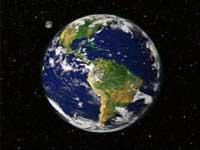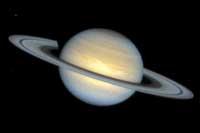The Earth, increasingly dense
According to laser measurements, the Earth has changed very strangely in recent years. In the 1980s and 1990s the perimeter of the equator was shrinking. But since 1998, with a totally modified trend, this perimeter is growing. They are small changes, but scientists fail to explain them at all.

The "thinning" of the Earth may be due to the melting of the poles. Over time, as this ice melted, the polar mass decreased because the sea distributes water all over the planet. But, on the other hand, the loss of matter by the poles also meant a loss of weight, so the Earth was slightly lengthened by the poles. This deformation caused a decrease in the perimeter of the equator.
In the last four years, however, the trend has been contrary, but not by the rise of sea level. On the contrary, experts have another explanation. The liquid iron of the core of the Earth is occasionally shaken. The last one took place in 1999. According to the scientists, in that agitation, many matters were directed under the poles toward the equator, which caused a "thickening" of the planet. But there are many doubts as to whether it is a good explanation.
Laws of the planets
Since satellites it was seen long ago that the Earth is not a perfect sphere. Its radius in the equator is higher than in the poles. The difference is not significant, around 0.3%. In addition, this effect occurs on all planets.
The rotation of a planet produces a centrifugal effect; little by little the matter moves towards the equatorial zone and is placed as close as possible. In general, that is why the planets are more plane at the poles.

Logically, depending on the characteristics of each planet, deformation will be greater or smaller. The big ones have more matter than the small ones, and also the biggest planets of the Solar System are the gaseous planets. Jupiter, Saturn, Uranus and Neptune are gigantic balls of gas.
In addition, the rotation speed is affected: the faster it rotates, the more centrifugal effect occurs. The case of Saturn is evident. Its mass is very large and its rotation is very fast; in fact, Jupiter has more mass and rotation faster than Saturn, but its gas is not as compact as that of Jupiter. Therefore, the Saturn effect is more pronounced. In fact, in the photos it is easy to see that Saturn is not a sphere.
Buletina
Bidali zure helbide elektronikoa eta jaso asteroko buletina zure sarrera-ontzian











